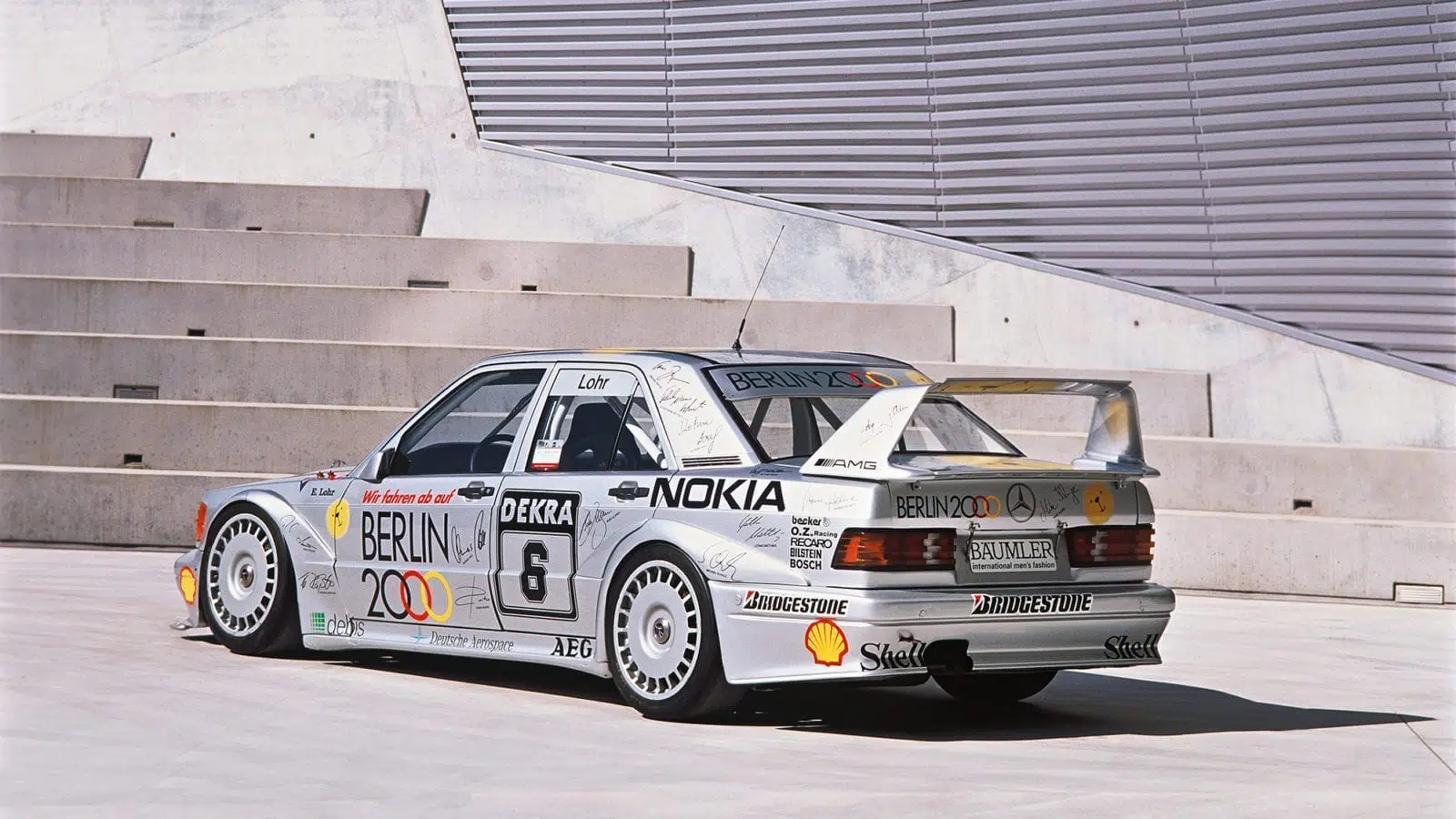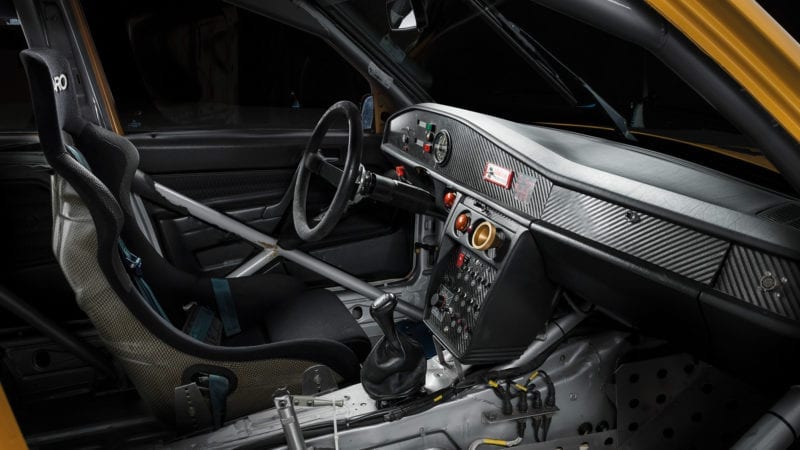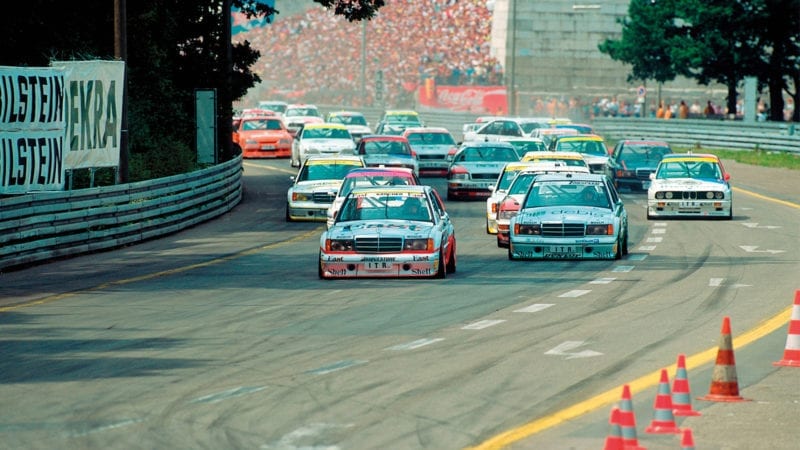Race car buying guide: Mercedes 190 Evo II DTM
Boxy but beautiful, the 190 was a true trailblazer for Mercedes, and sparked its association with AMG

In 1992 Ellen Lohr became the only woman ever to win a DTM race, driving an Evo II; as for Berlin 2000... never happened
Competition breeds success. It’s a statement that rings true throughout racing history. And perhaps at no moment was it more relevant than in Germany during the late 1980s. That was an era that gave us tin-top legends such as the BMW M3, the Audi Quattro and this, Mercedes’ answer to both of them – the 190 Evo II.
This is not only the car that finally elevated Mercedes to the top of the DTM for the first time, but it’s also the model that cemented its relationship with tuning firm AMG. Without the joint working between Mercedes and AMG on this car, would the Silver Arrows even be in the sport today? Who knows – but the 190 Evo II is the granddaddy of it all, even if it was never designed to be a touring car.
The 190 actually required a trifecta of powerhouses to create – Mercedes, AMG and Cosworth. The story started in the mid 1970s when Mercedes was set on engineering the ultimate compact saloon. Between the first drawing boards in 1974 and its release in 1982, the project, codenamed W201, cost Merc an eye-watering £600m to develop. And what better way to show off the car’s capabilities as the best all-rounder available? Rallying.
That’s right. Mercedes aimed this car at mud sport from day one. Touring cars was never on the agenda, until Plan A hit a Quattro-shaped roadblock.
While developing the chassis for the World Rally Championship Mercedes commissioned Cosworth to create a suitable engine, which resulted in a 320bhp 2.3-litre 16V monster. Everything looked rosy. But then, just as Mercedes was finalising its entry, Audi ripped up the rulebook with the all-conquering four-wheel-drive Quattro that arrived in 1981 and was dominating a year later.

The cockpit of Roland Asch’s 190 Evo II, which competed in a DTM-run invitation race at Kyalami, South Africa in 1990
Up against the turbocharged Quattro, the rear-driven 190 wouldn’t stand a chance, and Mercedes risked the model being made to look completely outdated before it had arrived. The rally project was shelved and it had to look elsewhere, which brought Mercedes to AMG’s door.
Ex-Mercedes engineers Hans Werner Aufrecht and Erhard Melcher’s tuning firm had been turning itself into the leading sporting Mercedes specialist since its first entries in 1971 running the ‘Red Sow’ –a 6.8-litre 300SEL.
Rules stated that all entries be backed up by at least 500 road-going variants
AMG had race experience, Cosworth the engine, and Mercedes the chassis. A deal was struck for Mercedes and Cosworth to produce the 190 as a touring car and hand it across to AMG to run in the DTM from 1988. Again, there was a hiccup. Rules demanded that all entries be backed up by at least 500 road-going variants. So Mercedes and Cosworth created a run of 190E 2.3-16 editions, and would have to do the same again for each evolution of the model.
For 1988 Mercedes supplied five teams (including AMG) and there were some notable successes, such as Dany Snobeck scoring the 190’s first win at the Nürburgring and Johnny Cecotto taking victories at AVUS and the Hungaroring.
But with BMW upping the ante with its ever-evolving M3 Sport Evolution, more would be needed to turn the 190 into a true championship challenger.
For 1989, the Evo I arrived on the scene, with a 2.5-litre 330bhp Cosworth engine, lighter bodywork, wider arches and a modest rear spoiler. The updated car arrived late, in time for round four at Mainz and Roland Asch gave it a flying start by winning on the Evo I’s debut. But the delay meant BMW swept the championship.
Things changed when the Evo II arrived for 1990. It joined the grid in May and the first season was used as a development year for ABS configuration and that wilder aero kit. Mercedes just missed out on the 1991 title.

Danish driver Kurt Thiim was recently reacquainted with his Evo II, which has been fully restored to race in classic DTM events
And then came 1992, the year Mercedes finally achieved domination. The Evo II won 16 of the 24 races, with Klaus Ludwig scoring the brand’s first DTM title. The Evo II also played a part in helping Ellen Lohr become the first, and only, female driver to win a DTM race when she took victory at Hockenheim.
The 190 Evo II would be replaced by the C-Class for 1994, which would go on to become the most successful DTM racer of all time. Off the back of the racing partnership, Mercedes bought the controlling stake in AMG in 1999, and it has been its performance benchmark ever since. And it all harks back to the foundations laid by the 190.
Mercedes 190 Evo II DTM statistics
- Price new N/A
- Price now £250,000-£400,000
- Engine Cosworth 2.5-litre 16V, naturally aspirated
- Rivals BMW M3 Sport Evolution, Audi Quattro V8, Alfa Romeo 155 V6 Ti
- Verdict An understated car that forged Mercedes’ partnership with AMG
